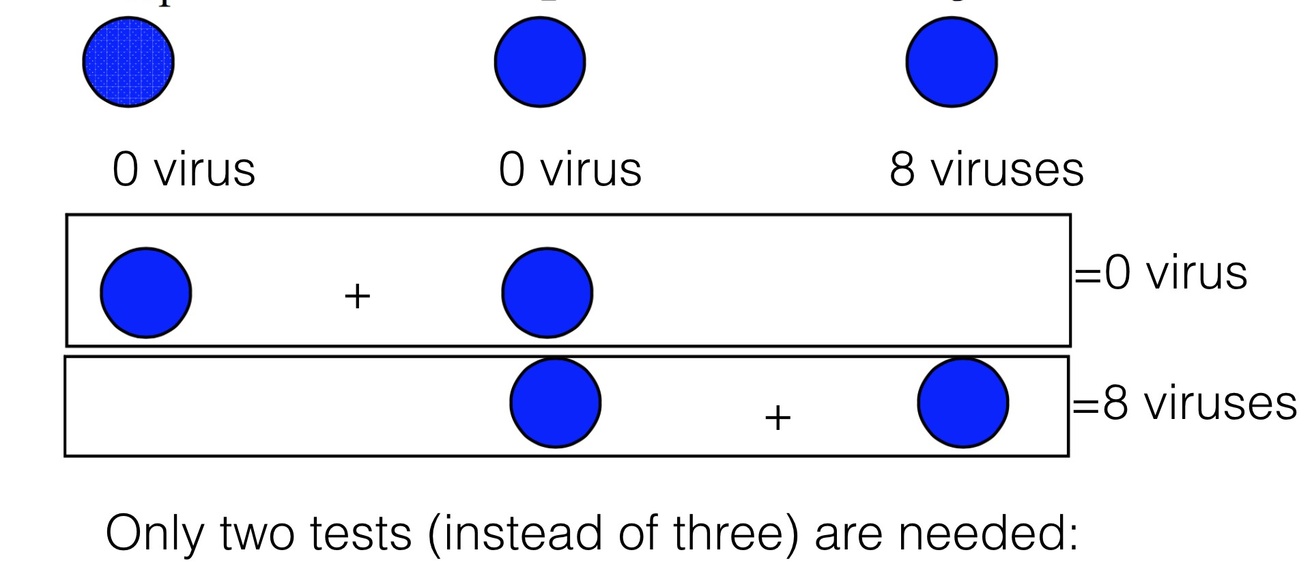Three University of Iowa electrical and computer engineering faculty members have received a National Science Foundation (NSF) RAPID grant titled “RAPID: High-Throughput and Low-Cost Testing of COVID-19 Viruses and Antibodies through Compressed Sensing and Group Testing” to develop novel testing technology that has the potential to break the testing bottleneck seen during the current COVID-19 pandemic—as well as potential future pandemics.
Mass testing for COVID-19 viruses and antibodies is essential for disease diagnosis, virus spread confinement, contact tracing, and determining when to return to normal economic activities. However, the capacity of current testing technologies for COVID-19 viruses and antibodies is limited, and there are not enough reagents to perform needed mass testing.
Together with graduate student Jirong Yi, electrical and computer engineering professors Weiyu Xu, Raghu Mudumbai, and Xiaodong Wu have developed a new method to process a large volume of COVID-19 virus and antibody tests rapidly and accurately using fewer reagents based on compressed sensing, a novel mathematical and signal processing idea.
Preliminary results show that this method can potentially provide a 10-fold speedup or more compared with current testing technologies. For example, this new virus testing method could potentially increase the COVID-19 testing capacity of a lab from 3,000 tests per day to 30,000 tests per day.
The basic idea is to test the quantity/presence of virus/antibody in mathematically well-designed mixed samples—using, for example, real-time quantitative polymerase chain reaction (PCR) machines—and to use signal processing algorithms to infer the infectious status of each person.
Here’s how it would work if testing three people for possible virus infections: The researcher would mix the swab samples of Person 1 and Person 2 together and do the first test. Then they would pool the swab samples of Person 2 and Person 3 together and do the second test. If the first test reveals zero virus, and the second test reveals eight viruses, the researcher is able to infer Person 1 and Person 2 are negative for the virus, and Person 3 is positive. This method requires only two tests instead of three and to give the virus infection status of three people
More sophisticated sample mixing designs such as sparse bipartite expander graphs can increase the testing capacity even more.
To the best of the Iowa researchers’ knowledge, their work may be the first to propose and design compressed sensing methods for virus/antibody detection in general, and for COVID-19 detection in particular. A related classical method “group testing” was invented by American applied mathematician Robert Dorfman in World War II to detect soldiers with syphilis.
Compared with group testing, the authors’ compressed sensing method uses fewer tests, offers a larger scale-up of test processing, and can give quantitative rather than qualitative test results. Recent preliminary experiments performed by groups of researchers from India Institute of Technology and Harvard University validating the compressed sensing idea for virus testing have cited the Iowa authors' work in their preprints on medrxiv.org. More information about the Iowa authors' preliminary work can be found on arXiv.
The new NSF RAPID award will support the Iowa researchers' efforts in designing optimized pooled (mixed) measurements and effective inference algorithms for compressed sensing and group testing in COVID-19 virus and antibody testing.
